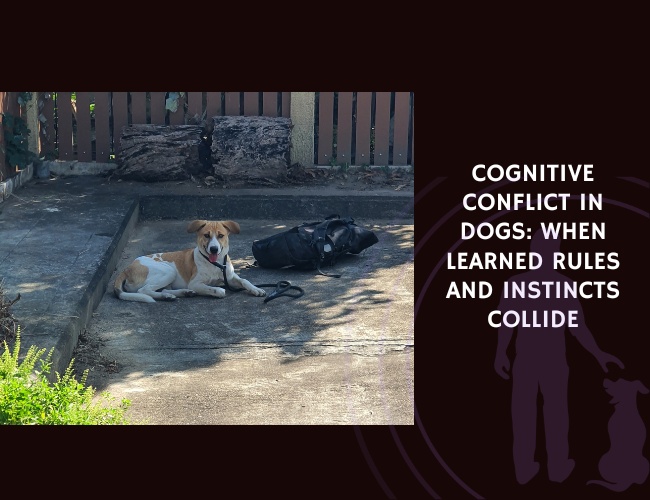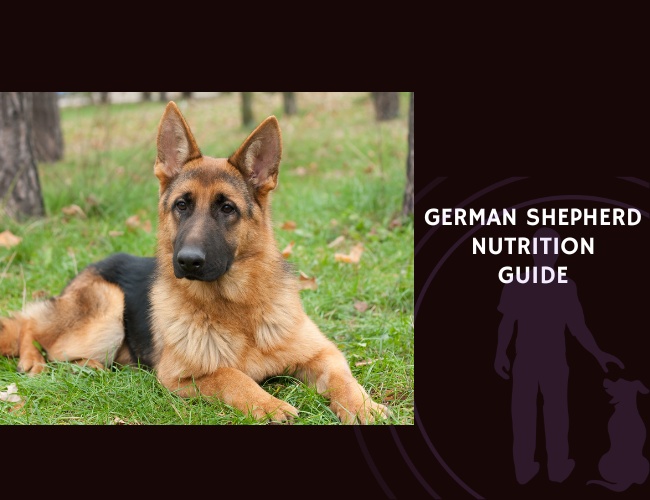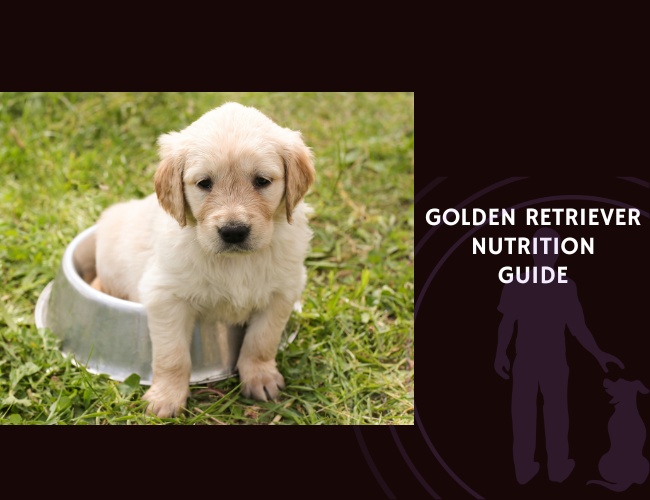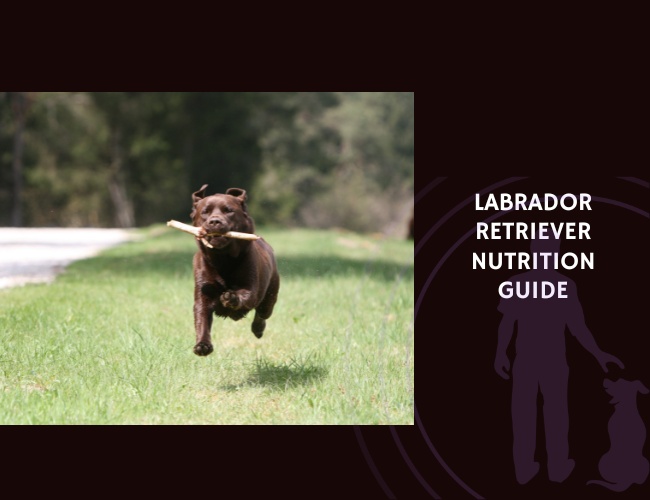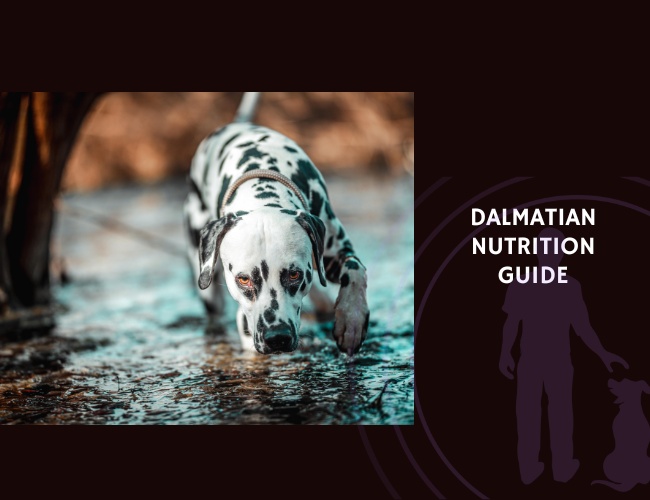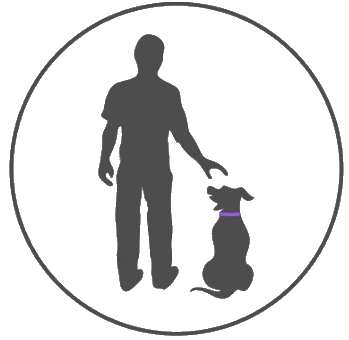Welcome to our exploration into the fascinating world of dogs and their behaviors. In this journey, we aim to unveil some truths about our four-legged friends’ behavior that might surprise you. It is widely believed that dogs, like all creatures, display inherent egoistic and selfish traits in various situations. But what do we mean by “egoistic” and “selfish” when it comes to dogs? Are these behaviors common to all dogs or do they vary from one dog to another? Let’s dive in to find out more.
The Egoistic and Selfish Nature of Dogs
Dogs are wonderful companions, known for their loyalty and affectionate nature. However, there are times when they exhibit behaviors that can be perceived as egoistic or selfish. These behaviors may include not sharing toys or food, showing aggression when approached during meal times, or acting out when they don’t receive attention. While these actions can be confusing and even frustrating at times, it is important to remember that these behaviors are often a product of their inherent nature, shaped by various factors we will explore in the following sections.
1. Instinctual Behavior: Dogs, like their wild ancestors, have a natural instinct to protect and guard resources such as food, toys, and territory. This behavior stems from their survival instincts and can manifest as possessiveness or guarding behavior. It is important to note that this behavior is not necessarily driven by selfishness but rather a response to perceived threats.
2. Lack of Socialization: Dogs that have not been properly socialized may struggle with sharing and cooperating with others. If a dog has not had positive experiences with sharing resources or has not been exposed to different social situations, they may exhibit self-centered behaviors when it comes to their possessions.
3. Resource Guarding: Some dogs may develop a behavior known as resource guarding, where they become possessive and defensive over certain items or areas. This behavior can be triggered when they feel their resources are being threatened or are at risk of being taken away. Resource guarding is typically a learned behavior and can be managed through training and behavior modification techniques.
4. Lack of Training: Dogs that have not received proper training or boundaries may exhibit selfish behaviors simply because they have not been taught otherwise. Without clear guidelines and expectations, dogs may resort to acting out or demanding attention in order to get what they want.
5. Attention-Seeking Behavior: Dogs are social animals and thrive on human interaction and attention. When they feel neglected or ignored, they may resort to attention-seeking behaviors, even if it means behaving in a seemingly selfish manner. This behavior is often a cry for companionship and can be addressed through increased interaction and mental stimulation.
It is important to approach these behaviors with patience, understanding, and proper training techniques. By addressing the underlying causes and providing consistent guidance, it is possible to help dogs develop more cooperative and less self-centered behaviors.
Factors Influencing Dog Behavior
Understanding dog behavior requires us to take into account a multitude of factors. The first among these is individual experiences. Just like humans, dogs go through a range of experiences throughout their lives, which shape their behavior. For instance, a dog that has been mistreated in the past may exhibit fear or aggression, which can be interpreted as being selfish or egoistic.
Learned behavior is another critical factor. Dogs learn from their interactions with humans and other animals. If a dog learns that it gets rewarded when it behaves in a certain way, it is likely to continue exhibiting that behavior, even if it appears selfish to others.
Lastly, physical limitations also play a role in a dog’s behavior. Aging, illness, or discomfort can lead to changes in a dog’s behavior. For example, an older dog may become more protective of its space, which could be perceived as egoism.
Throughout this blog, we will delve deeper into these aspects, shedding light on why dogs behave the way they do and how we can better understand and communicate with them. Remember, every dog is unique and understanding them requires patience and empathy. As we embark on this journey together, let’s keep an open mind and a loving heart towards our furry friends.
Understanding Dogs as Independent Beings
Dogs, often thought of as our best friends, are independent beings with their own unique language, thought processes, and manners. This independence is key to their behavior, which can sometimes be perceived as egoistic or selfish. But are these attributes necessarily negative?
In reality, the terms ‘egoistic’ and ‘selfish’ carry human-based connotations. We tend to view these traits unfavorably due to our societal norms and values. When applied to dogs, we may misinterpret their actions based on our expectations. Remember, dogs have evolved over thousands of years and have developed certain behaviors that have allowed them to thrive.
For example, a dog’s instinctual urge to secure food resources might be interpreted as selfish. However, in the canine world, this is a matter of survival, not an expression of greed. Similarly, a dog marking its territory could be viewed as egoistic. But again, this is an evolutionary response to ensure safety and security.
The Misconception of Expecting Human Behavior from Dogs
One of the most common misconceptions pet owners have is expecting dogs to behave like humans. This anthropomorphism can lead to misunderstanding and miscommunication. We have to remember that dogs don’t think like us; they have their own set of instincts and drives that guide their behavior.
For instance, when a dog jumps up on us upon our return home, we might interpret it as an act of joy. While there’s some truth in that, dogs also jump up to greet each other face to face in the wild. So in essence, your dog is treating you like another dog, not a human.
Understanding this difference is crucial for effective communication. It helps us respect our dogs for who they are – independent beings with their own unique ways of experiencing the world. By doing so, we can better understand their needs and responses, leading to a healthier and happier relationship.
In sum, dogs are indeed egoistic and selfish, if we use those words in their basic meaning: looking out for one’s own best interests. However, it’s important to remember that these characteristics are part of their natural behavior, shaped by evolution for survival. Rather than expecting dogs to act like humans, we should strive to understand their world and communicate effectively within it. After all, understanding leads to empathy, and empathy strengthens bonds.
Effective Communication with Dogs
When it comes to communicating with our canine companions, a keen understanding of their natural inclinations is crucial. As we’ve discussed in the previous sections, dogs are inherently distinct creatures with their individualistic nature and thus, require different communication approaches than humans. In this section, we’ll delve into practical ways to convey desired changes in behavior to dogs, using cues that they can easily comprehend.
Understanding Dog Language
Firstly, we must acknowledge and respect that dogs have their way of communicating. Their language comprises visual signals, vocalizations, and even scents. To bridge the gap between human and dog communication, we must observe and learn their language. For instance, when a dog is wagging its tail slowly, it usually signifies contentment, while an erect tail indicates alertness or potential threat.
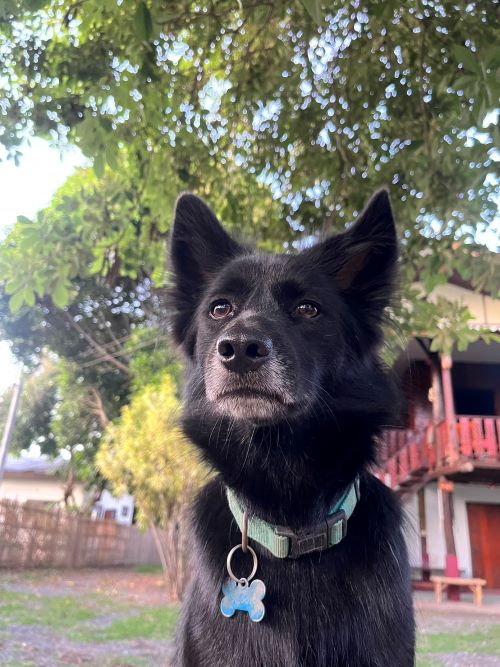
Conveying Desired Behavior Through Signals
Once we understand how dogs communicate, we can use this knowledge to signal our desire for behavioral changes. Remember, dogs don’t have a concept of right or wrong in the human sense. Instead, they respond to our signals based on whether they lead to rewarding or non-rewarding outcomes. For example, if a dog jumps on people out of excitement, rather than shouting or getting frustrated, ignore the dog’s action. When the dog calms down and has all four paws on the ground, reward this behavior with attention or treats. This way, the dog learns that keeping calm gets them what they want, effectively teaching them a new, desirable behavior.
Personal Experiences and Tactics
Many dog owners and trainers have developed tactics based on personal experiences that prove effective in communicating with dogs. One such method is squatting down to the dog’s level when calling them. This non-threatening posture is more inviting to a dog and encourages them to approach. Another tactic is using a low growling sound to signal disapproval. This mimics the warning growls dogs use amongst themselves, which they instinctively understand.
It’s important to remember, however, that like humans, each dog is unique. What works for one may not work for another. Some dogs might be more responsive to visual signals, while others might react more to vocal cues or physical touch. It’s all about observing your dog, understanding their preferences, and adjusting your communication style accordingly.
In our journey to comprehend the egoistic and selfish nature of dogs, effective communication is key. While it may seem challenging initially, with patience, observation, and understanding, we can develop a harmonious language that respects our dogs’ inherent nature while promoting desired behaviors. And remember, communication is a two-way street. As we strive to understand our dogs better, we also offer them a chance to understand us better, strengthening our bond in the process.
The Role of Mirror Neurons and Joint Activities
Let’s take a dive into the world of neuroscience to understand an interesting concept – mirror neurons. These are specialized cells in the brain that fire not only when we perform an action, but also when we observe someone else perform the same action. They essentially allow us to ‘mirror’ the behavior of others, playing a crucial role in learning and empathy. Interestingly enough, researchers have found that dogs too have these mirror neurons, which could explain some of their behavior.
Now, what happens when we engage in joint activities with our dogs? You might have noticed that your furry friend seems more focused and connected with you during shared experiences. This isn’t mere conjecture. Joint activities stimulate the mirror neurons in dogs, leading to improved concentration and a strengthened bond between you and your pet. So, when we engage in activities together, we’re effectively speaking a language both we and our dogs can understand.
Searching for a Dummy: A Practical Example
Perhaps you’re wondering how this plays out in real life. Well, a perfect example is a common training exercise known as ‘searching for a dummy’. In this activity, you hide a toy (the dummy) and encourage your dog to find it. It may seem like a simple game, but it’s much more than that.
As you and your dog search for the dummy together, you are sharing an experience. Your dog sees you engaged in the same task, which stimulates their mirror neurons. This boosts their focus and understanding of the task at hand. Furthermore, as they succeed in finding the dummy, they associate the shared activity and your encouragement with a positive outcome. This encourages them to repeat the behavior, and over time, helps shape their overall behavior.
Such joint activities not only promote good behavior but also strengthen the bond between you and your dog. They foster a sense of cooperation and mutual understanding, subtly reinforcing the idea that you and your dog are a team, working together rather than against each other. And isn’t that what we all want?
Remember, our dogs are independent beings with their own thought processes and languages. Yet, through shared experiences and the magic of mirror neurons, we can bridge the communication gap and foster a deeper connection with them. So next time you’re struggling with behavioral issues, why not try a joint activity? You might be surprised at the positive changes it brings.
Variable Social Systems in Dogs’ Behavior
Just as human society is shaped by complex social structures, the same holds true for our canine companions. Dogs, like humans, have social systems that significantly influence their behavior. This intricate network of interactions and relationships among dogs plays a key role in how they behave, making them fascinating subjects to study.
The concept of ‘variable social systems’ in dogs is rooted in evolutionary biology. Essentially, it suggests that dogs, much like other animals, have evolved to exhibit certain behaviors based on their specific social environment. These behaviors may vary widely, depending on factors such as their breeding, upbringing, and current living conditions.
Let’s consider an example. In human society, individuals are influenced by a variety of social norms and customs, which can differ greatly from one culture to another. Similarly, dogs raised in different environments or cultures may develop distinct behaviors. For instance, a dog raised in a busy urban environment may behave differently than one brought up in a quiet rural setting. These differences are often the result of differing social systems.

The Role of Sexual and Social Systems in Dogs’ Behavior
Within these variable social systems, two major elements play a significant role in shaping a dog’s behavior: sexual and social systems. Both systems are products of evolution, and thus, they provide an instinctual basis for how dogs act.
Sexual systems, for instance, are primarily concerned with mating and reproduction. These systems involve behaviors related to courtship, mating, and parental care. As a result, dogs may exhibit certain ‘selfish’ behaviors, such as competition for mates or resources, which are driven by the need to pass on their genetic material to the next generation.
On the other hand, social systems revolve around the interaction between individual dogs and their groups. Dogs are pack animals by nature, and their social systems dictate how they interact within their packs. This could be seen in actions such as establishing dominance, protecting territory, or cooperating in activities like hunting. While these behaviors may appear egoistic or selfish from a human standpoint, they are vital survival tactics in the dog world.
In essence, understanding these variable social systems in dogs gives us a clearer picture of why dogs behave the way they do. It helps dispel the notion that dogs are inherently selfish or egoistic. Instead, they are adaptive creatures responding to their environmental pressures and instincts, just as we humans do.
The Evolutionary Basis of Dog Behavior
In our journey to decipher the inherent egoism and selfishness in dogs, we’ve examined their independence, communication strategies, the role of mirror neurons, and variable social systems. Now, let’s shift our focus to the backdrop that subtly influences all these aspects: evolution. Evolution plays a fundamental role in shaping the behavior and characteristics of all living organisms, including dogs. Through the process of natural selection, certain traits that enhance an individual’s survival and reproduction become more prevalent in a population over time. This principle applies to dogs as they have evolved from their ancestor, the gray wolf.
One important aspect of evolution is the concept of fitness, which refers to an organism’s ability to survive and reproduce successfully. In the case of dogs, traits that increase their fitness would have been favored by natural selection. For example, wolves with better hunting abilities or those who could cooperate effectively in packs would have had a higher chance of survival and passing on their genes.
The domestication of dogs, which began thousands of years ago, has also influenced their evolution. Humans selectively bred dogs for specific traits such as herding, guarding, or companionship, leading to the vast diversity of dog breeds we see today. This artificial selection by humans has shaped dogs’ behavior and social tendencies to some extent.
When examining the inherent egoism and selfishness in dogs, it is essential to understand that their behaviors and instincts are deeply rooted in their evolutionary history. Dogs, like their wolf ancestors, possess certain innate survival instincts, which can be perceived as self-centered or driven by self-interest. For example, dogs may compete for resources, defend their territories, or prioritize their own well-being.
However, it is crucial to acknowledge that dogs also display social behaviors and cooperative tendencies. This is where the influence of domestication comes into play. Through selective breeding and living in close proximity to humans, dogs have developed social skills and the ability to form strong bonds with humans and other animals.
Furthermore, the evolution of dogs has been intertwined with human evolution. Dogs have co-evolved alongside humans, adapting to our social structures and becoming highly attuned to our emotions and communicative cues. This unique bond between dogs and humans has contributed to their ability to work collaboratively with humans and display behaviors that are cooperative and altruistic.
In conclusion, evolution has shaped the behavior of dogs, including their inherent egoism and selfishness. While dogs possess certain survival instincts that may be perceived as self-centered, their domestication and co-evolution with humans have also imbued them with social and cooperative tendencies. Understanding the evolutionary backdrop provides valuable insights into the complex nature of dogs’ behavior and their interactions with humans.
Evolutionary Acquired Strategies in Canine Behavior
When we talk about dog behavior, it’s crucial to remember that, just like humans, they are products of millions of years of evolution. This evolution has designed a set of survival strategies that now control their behavior in the background. These strategies, known as ‘evolutionarily acquired strategies’, are not conscious decisions made by dogs. Instead, they are instinctive reactions to specific situations, honed over countless generations to ensure survival.
For instance, the territorial nature of many dogs is an evolutionary strategy. By marking and defending a territory, dogs ensure access to resources like food and mates, which increases their chances of survival. Likewise, pack behavior is another such strategy. In the wild, being part of a group offers protection and increases hunting success, leading dogs to instinctively seek out and form social bonds.with other dogs or even with humans.
Another important aspect of dog behavior that is rooted in evolution is their ability to communicate. Dogs have developed a complex system of vocalizations, body language, and facial expressions to convey their intentions and emotions. This communication system allows them to establish social hierarchies, resolve conflicts, and form cooperative relationships.
Furthermore, many of the behaviors exhibited by dogs today can be traced back to their ancestors’ hunting and survival instincts. For example, chasing after moving objects, such as balls or squirrels, is an instinctive behavior that stems from their predatory nature. Dogs also have a strong prey drive, which explains why they may become fixated on certain scents or engage in activities like digging or stalking.
Understanding the evolutionary basis of dog behavior is crucial for effective training and handling. It helps us recognize and respect their natural instincts and needs, allowing us to provide appropriate outlets for their energy and mental stimulation. By acknowledging their evolutionary history, we can create a harmonious environment that supports their well-being and strengthens the bond between humans and dogs.
Variability of Social Systems: Learning from Dunnock Birds
To further illustrate this point, let’s take a detour into the world of birds. Specifically, the Dunnock bird presents a fascinating case study. In different environments, Dunnocks exhibit a wide range of social systems – from monogamy and polygamy to cooperative breeding. This variability isn’t due to individual choice but is a consequence of the environment and resources available, demonstrating how evolution can shape social behavior.
So, what does this have to do with dogs? Just as environmental factors influence the social behavior of Dunnocks, so too do they shape the behavior of dogs. For example, feral dogs living in an environment abundant with resources might form large packs, while those in resource-scarce areas might prefer a solitary existence. This variability in behavior across different environments underscores the powerful influence of evolutionary strategies.
In essence, understanding the evolutionary basis of dog behavior allows us to see their actions in a new light. Instead of labeling them as ‘selfish’ or ‘egoistic’, we can appreciate these behaviors as survival strategies shaped by millions of years of evolution. It’s a subtle reminder that our furry friends, like all creatures on Earth, are beautifully adapted for survival, each behavior a testament to the intricate dance of evolution and natural selection.
Conclusion
In this enlightening journey, we have traversed the complex world of dogs, their behavior, and instinctive nature. We embarked on this exploration by initially setting out to understand the inherent egoistic and selfish nature of our canine companions. Through the course of our investigation, we’ve discovered that various factors influence their behavior. These include individual experiences, learned behaviors, and physical limitations.

We then delved deeper into recognizing dogs as independent beings, possessing their unique language, thought patterns, and manners. This understanding is vital to dispel common misconceptions of expecting human-like behavior from dogs. Such expectations can often lead to issues in communication and misunderstandings about their true nature.
By learning how to effectively communicate with dogs and use signals that they can comprehend, we can better guide their behavior. This knowledge was supplemented with personal anecdotes and tactics, like squatting on the ground or growling, techniques that work well in building mutual understanding. Furthermore, we explored the role of mirror neurons and joint activities. We found that engaging in activities together, like searching for a dummy, can improve concentration and foster a sense of togetherness.
The influence of variable social systems on dogs’ behavior was another key aspect we examined. Much like human society, dogs’ sexual and social systems, products of evolution, play a pivotal role in shaping their conduct. This led us to delve into the evolutionary basis of dog behavior, where we discovered that inherited strategies control dogs’ actions. The variability seen in other animals, like the Dunnock bird, mirrors the variability observed in dogs, further solidifying our understanding.
Ultimately, it’s crucial to remember that dogs, much like all creatures, possess an inherent egoistic and selfish nature. This nature is shaped by a multitude of factors including their evolutionary history, individual experiences, and learned behaviors. While some may perceive these traits negatively, they are simply part of a dog’s survival mechanism, honed over thousands of years.


